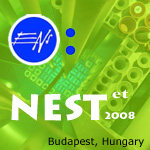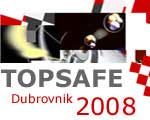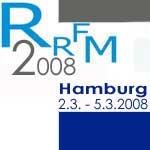
Summary of the main EU Energy Developments, 2007

This year, the EU institutions have launched
a number of initiatives in the energy field. Here is a diary
of
all the events that have shaped the EU energy policy in 2007. These
political development could have a direct impact upon how the
nuclear science community works in the future and what its working
enviroment will be like.
10 January: Publication of the EC “Energy
Package”
On 10 January 2007, the European Commission (EC) presented an “energy
package”, which consists of a Communication entitled An
Energy Policy for Europe, communications and reports on coal,
biofuels, nuclear (the so-called PINC); a competition enquiry
into electricity and gas markets and a green paper on climate
change. The communication on energy policy and the PINC (Nuclear
Illustrative Programme) clearly recognise the key contribution
that nuclear energy makes to the achievement of the EU’s
security of supply, climate change and competitiveness goals.
It also highlights how nuclear energy is and will remain a key
component of the EU’s energy mix.
You can find these documents in the
Energy section of the Commission website.
For further information, you can also read the
PINC, the
Communication from the Commission , and FORATOM
press release.
9 March: Spring Council conclusions
The Council conclusions published on 9 March make a clear and
unequivocal link between energy and climate change. The two
main elements of the strategic approach that defines the
post-2012 climate change framework are the strengthening
and extension
of global carbon markets and the development, deployment
and transfer of the technology needed to reduce greenhouse
gas
(GHG) emissions. The major strategic components highlighted
in the Conclusions are the adoption of two binding targets
for EU Member States to reach by 2020:
-
A 20% reduction of GHG emissions by 2020 compared to
1990 levels, which is consistent with the underlying policy objective
of “transforming Europe into a highly energy-efficient
and low GHG-emitting economy.”
-
A 20% share of the EU’s total power share from
renewable sources by 2020.
The implementation of these targets will be based on agreed
internal burden sharing, through the fixing of National Action
Plans that will take into account the Member States’ varying
domestic energy mixes.
The Conclusions contain a paragraph dedicated to nuclear energy
that covers three points:
-
the promotion of broad-ranging discussions with
stakeholder representatives on the opportunities and risks
of nuclear energy
(European Nuclear Energy Forum)
-
Its contribution to meeting growing concerns about security
of energy supply and CO2 emissions
-
the need for continued improvements in the field of nuclear safety
and radioactive waste management (support for R & D on
waste management under the FP7 and the potential creation
of a High-level
Group on nuclear safety and waste management)
Within this context, the European Commission, with the support
of MEPs, Member States and the European nuclear industry, recently
proposed the creation of a European Nuclear Energy Forum (ENEF)
to promote discussions with stakeholders. This forum will promote
a constructive and transparent dialogue and encourage a forward-looking
analysis of key issues relating to the future of nuclear energy,
including lifetime extensions of existing plants and nuclear
new build.
You can read the Council
conclusions, and FORATOM’s analysis
of the Council’s conclusions.
17 July 2007: Nuclear Safety Group Officially Launched by the
Commission The European Commission, on 17 July, set up a High-Level
Group on nuclear safety and waste management. The creation
of the group was proposed by the Commission in its January 2007
draft Nuclear Illustrative Programme and was endorsed by the
March European Council. The High-Level group is in charge of
analysing matters such as the safety and decommissioning of
nuclear
installations and management of spent nuclear fuel and radioactive
waste.
The members of the group are senior nuclear safety regulators
from member states. Countries with and without nuclear power
equally take part in the group. The work of the group has
to be carried out in coherence with other groups such as
the newly
created Nuclear Energy Forum. 21 September: New Platform for Sustainable Nuclear Research Launched
by EC
On 21 September 2007, in Brussels, the Sustainable Nuclear
Energy Technology Platform (SNETP) was launched by the
European Commission.
The SNETP aims to facilitate closer integration between researchers
and industry to enable the definition and implementation of a
Strategic Research Agenda (SRA) and corresponding Deployment
Strategy (DS), as well as to maintain Europe’s R&D
leadership in the nuclear research sector. An EC strategic document
entitled SNETP: A Vision Report was published. This report, which
was compiled with the support of industry, research centres and
the Euratom Scientific and Technical Committee, underlines the
special contribution made by nuclear energy to ensuring security
of energy supply, promoting competitiveness and fighting climate
change. It also provides a roadmap for the creation of the SRA,
highlighting the start-up, by 2020, of a new breed of fast reactors
(Generation IV), advanced recycling processes and the production
of alternative fuels, like hydrogen. The report also stresses
the need for increased resources for education and training in
nuclear engineering.
For further information, you can consult the
press release of the European Commission and the SNE-TP
website. 12 October: First meeting of the High Level Group on Safety and
Waste Management
The first meeting of the European Commission
(EC)'s High Level Group on Nuclear Safety and Waste Management
took place on 12 October. The creation of the group, endorsed
by the March European Council, follows on from the Commission's
Nuclear Illustrative Programme, adopted last week. The main
goal of the Group will be to help the Commission develop European
rules regarding the safety of nuclear installations and the
safe management of spent fuel and radioactive waste. It is
also expected to work in collaboration with other newly-created
bodies, the European Nuclear Energy Forum (ENEF) and the Sustainable
Nuclear Energy- Technology Platform (SNE-TP).
The group composed of 27 national senior officials
from national regulatory or nuclear safety authorities,
and their deputies
as well as a Commission representative elected Andrej Stritar,
the Slovenian Nuclear Safety Administration Director, as interim
Chairperson until the election of a permanent one expected next
January. Every two years, the Group will have to submit to the
Commission a report that will later be transmitted to the Council
and to Parliament. It should also identify safety issues, ensure
coherent action by national authorities and make recommendations
for EU action.
The creation of the Group shows once again that nuclear
power is increasingly gathering momentum within
the European Union.
During a press conference that followed the meeting, the Energy
Commissioner, Andris Piebalgs acknowledged that nuclear was "here
to stay". He added that it needs to be safe and that governments
need to "make up their minds as soon as possible" in
order to create certainty for investors.
For further information, please read the
press release of the European Commission, the
article of NucNet and the
article of Euractiv.
24 October: Publication of the
European Parliament Reul Report
The European Parliament’s (EP) adopted the Reul Report
entitled Conventional Energy Sources and Energy Technology. The
Report shows that there is growing political consensus that nuclear
energy “is indispensable if Europe’s medium and long-term
energy needs are to be met.” The report, which was proposed
by MEP Herbert Reul (EPP-ED, Germany) includes a section dedicated
to nuclear energy that is based upon an EC Communication on the
PINC. It was adopted with a majority of 509 votes for, 153 against
and 30 abstentions, with most of the anti-nuclear amendments
having been rejected. The EP’s adoption yesterday of the Reul Report by an overwhelming
majority is highly significant because it constitutes the first
time that the EP has explicitly endorsed nuclear energy’s
role as “the largest low-carbon energy source in Europe” and
a key component in Europe’s future energy mix.
For further information, please read the press
release of the European Parliament, the text of the report as adopted by the
European Parliament is available on the same page.
29-30 October: First meeting of the SNE-TP
Following the highly successful launch of the Sustainable Nuclear
Energy Technology Platform on 21st September, the FORATOM Secretariat
has been helping define the structure and rules of governance
of the Platform and participated in the inaugural meetings
of the Executive Committee and Governing Board on 29th and
30th October respectively. The Governing Board, which will
meet twice per year, comprises approximately 10 industrial
members, 10 from research organisations, 2 from TSOs, ENEN – the
nuclear education network, ENS and FORATOM. FORATOM is represented
by President Eduardo Gonzalez. The Executive Committee is smaller
and will meet more often. FORATOM is represented on this latter
group by Director General Santiago San Antonio. The first significant
task of the Platform will be to write a Strategic Research
Agenda by the end of 2008. The aim will be to define a roadmap
for all European nuclear fission research until the year 2040.
A sub-group will be established to undertake this work, led
by SCK/CEN. It has been proposed to the Commission that the
Chairman of the SNETP Governing Board, Mr. Philippe Pradel
of CEA, should participate in ENEF.
For further information, you can consult the SNE-TP
website. 22 November: Publication of the SET-Plan
On 22 November, the European Commission published the Strategic
Energy Technology Plan (SET-Plan). The plan aims at increasing
the use of low-carbon technologies to meet the targets set
up during the latest Spring Council in March of 20% CO2 emission
reduction and 20% renewable increase by 2020. The “clean” technologies
include not only renewables, but also sustainable nuclear fission
and carbon capture and sequestration (CCS). The document recognizes
officially that nuclear power is a key part of EU energy policy
and contributes along with other low-CO2 energy
sources to forging EU’s low-carbon economy. To achieve EU’s energy goals, the plan proposes measures
in order to increase effective co-ordination in research at EU
level:
-
A European Community Steering Group on Strategic Energy Technologies.
Chaired by the Commission, the group will be “composed
of high level government representatives from Member States.”
-
European Industrial Initiatives for renewables but also for nuclear
fission, CCS and electricity grids. The initiatives will be funded "in
different ways", such as public-private partnerships, or “joint
programming by coalitions of those interested Member States”.
-
A European Research Alliance bringing together more closely universities
and institutes for energy;
-
A new Energy Technology Information System, and;
-
Organisation in the first half of 2009 of a European Energy Technology
Summit.
For further information, please go to
the website
of DG Tren and read the
Commission press release:
European
Commission
proposes a plan to accelerate energy
technologies for a low-carbon future,
the
Commission communication: Towards
a low carbon future – A
European Strategic Energy Technology
Plan, and the
SET Plan Technology Map. 26-27 November: European Nuclear Energy Forum’s first
Meeting in Bratislava
The first meeting of the European Nuclear Energy
Forum (ENEF), which aims to promote an inclusive,
transparent and non-ideological
debate on nuclear between all the relevant stakeholders, took
place in Bratislava on 26-27 November 2007. The meeting gathered
over 50 participants and featured high level speakers such
as the Prime Ministers of Slovakia and Czech
Republic, Mr. Fico
and Mr. Topolanek respectively; the President of the European
Commission, Mr. Barroso, and the Energy Commissioner, Mr. Piebalgs. The Forum will establish three working groups that will probe
into the opportunities of nuclear (financing, technologies, new
build), the risks of nuclear (safety, security, waste management),
and information and transparency (public acceptance). They will
draft proposals in order to enable ENEF to provide a roadmap
for the continued development of nuclear energy in the European
Union. The working groups will meet for the first time end of
January 2008 and are expected to meet twice before the next meeting
of ENEF that is scheduled on 22 & 23 May 2008 in Prague.
ENEF should eventually provide advice to European policy makers,
mainly in the European Institutions on security of energy supply,
incentives for investment, EU legislative issues, public opinion,
education and training, R&D and knowledge management, safety
and waste management. It is also expected to work in collaboration
with other newly-created bodies the Sustainable Nuclear Energy-
Technology Platform (SNE-TP), and the High Level Group on safety
and Waste management (HLG). ENEF gathers for the first time a
broad range of stakeholders – the nuclear industry, public
authorities, the financial community and various sections of
civil society.- in a debate on the future of nuclear energy in
Europe.
For further information, please consult the
ENEF section of the FORATOM website and the ENEF section of the Commission
website. |







